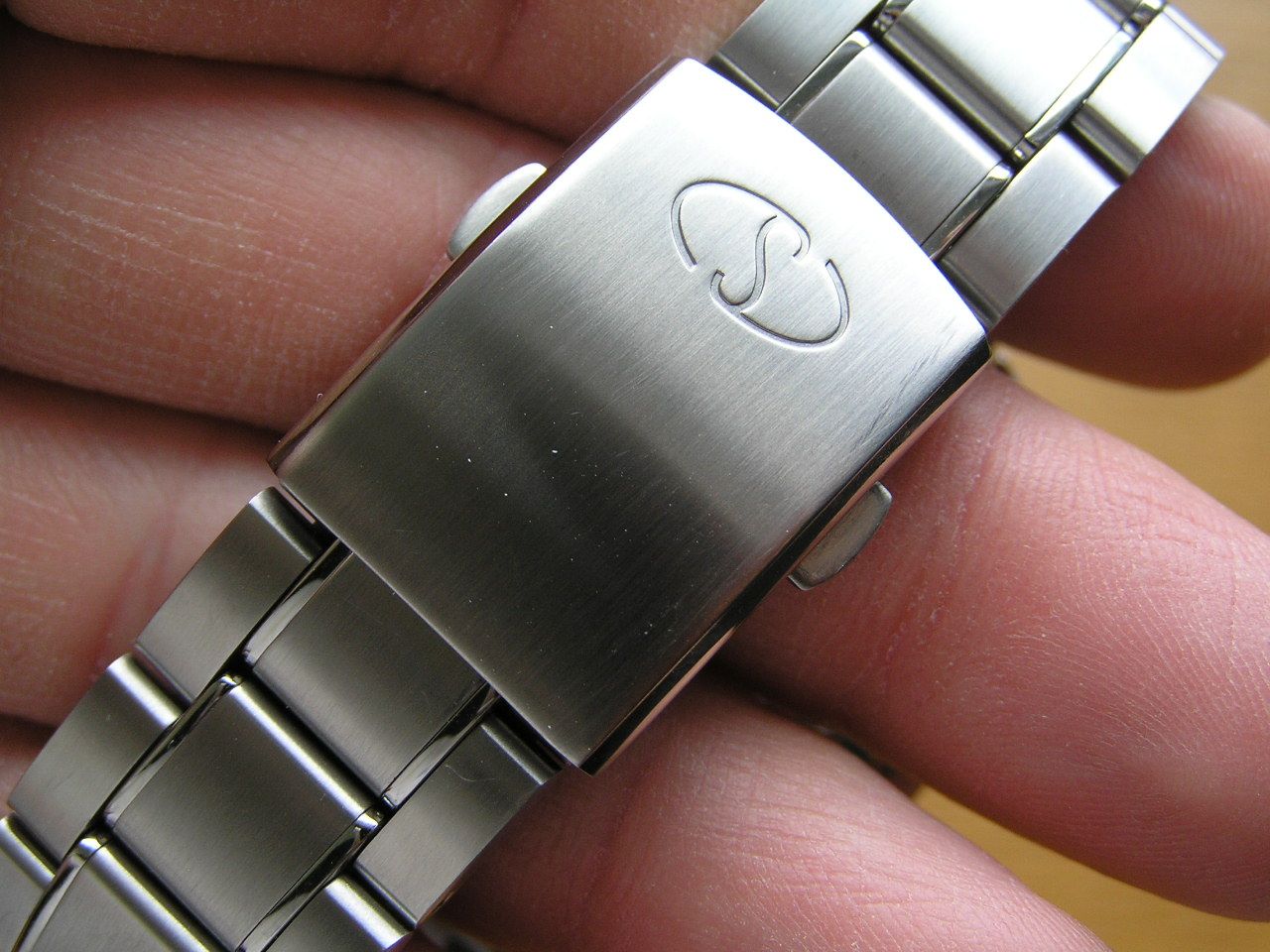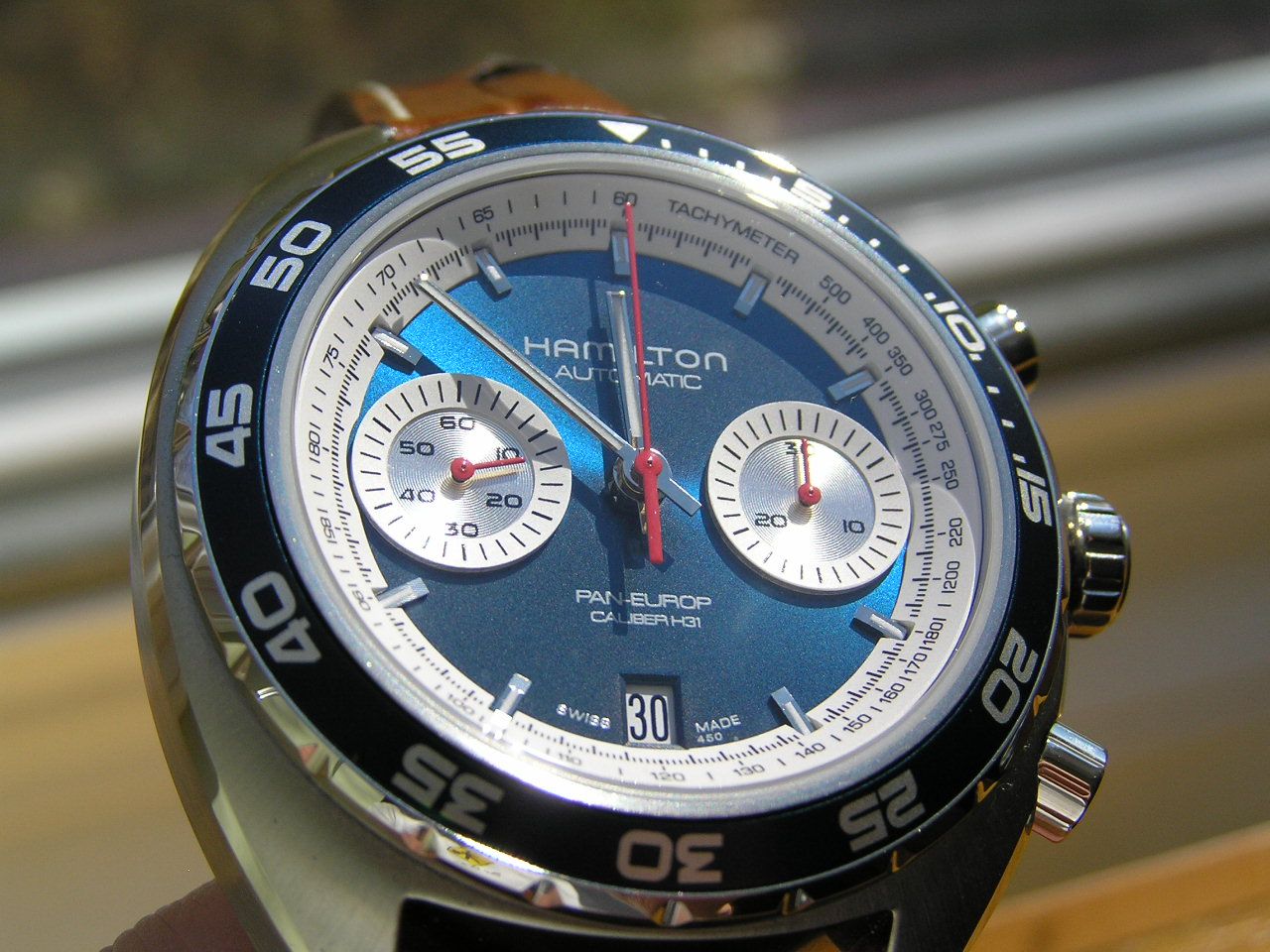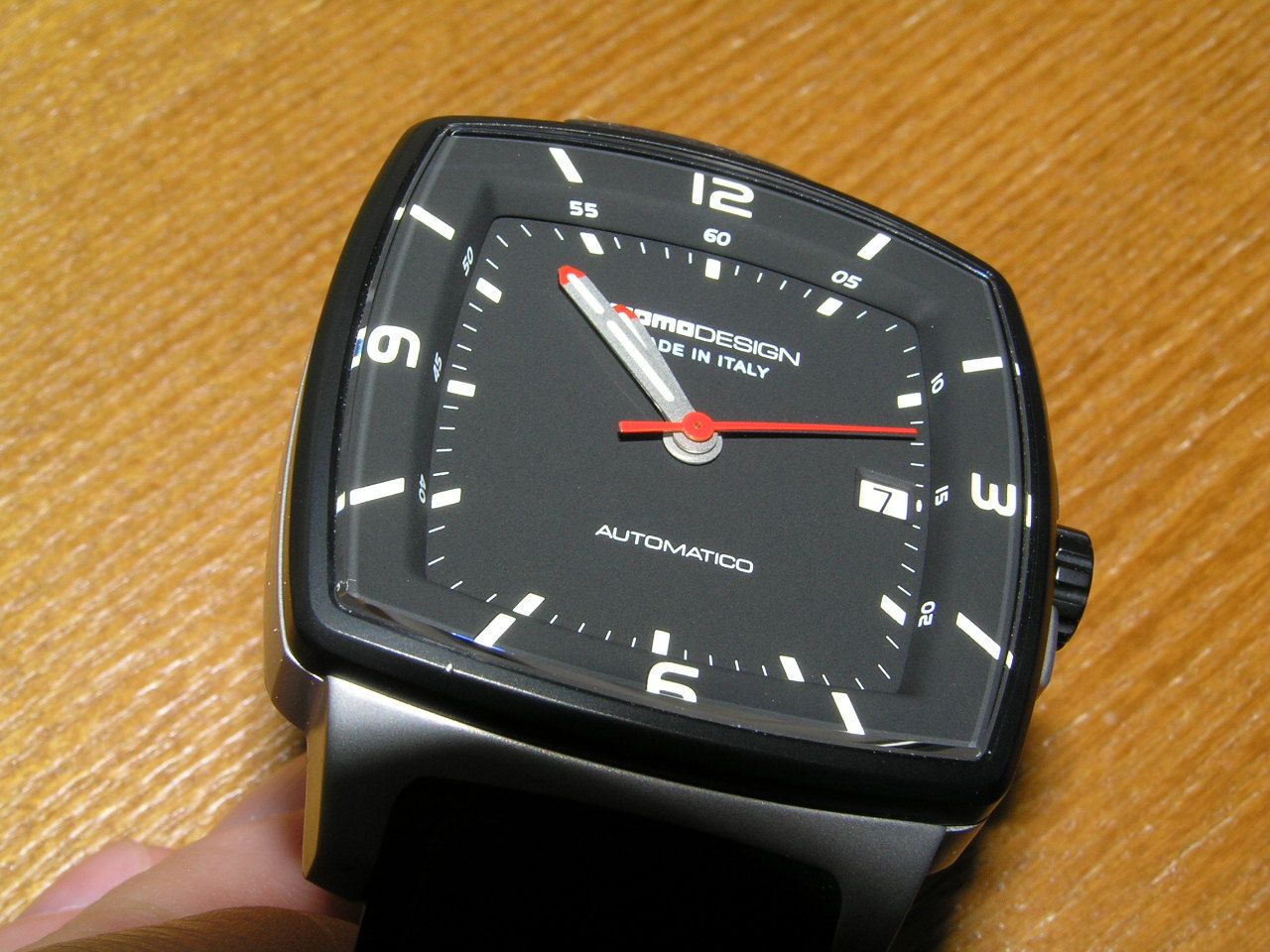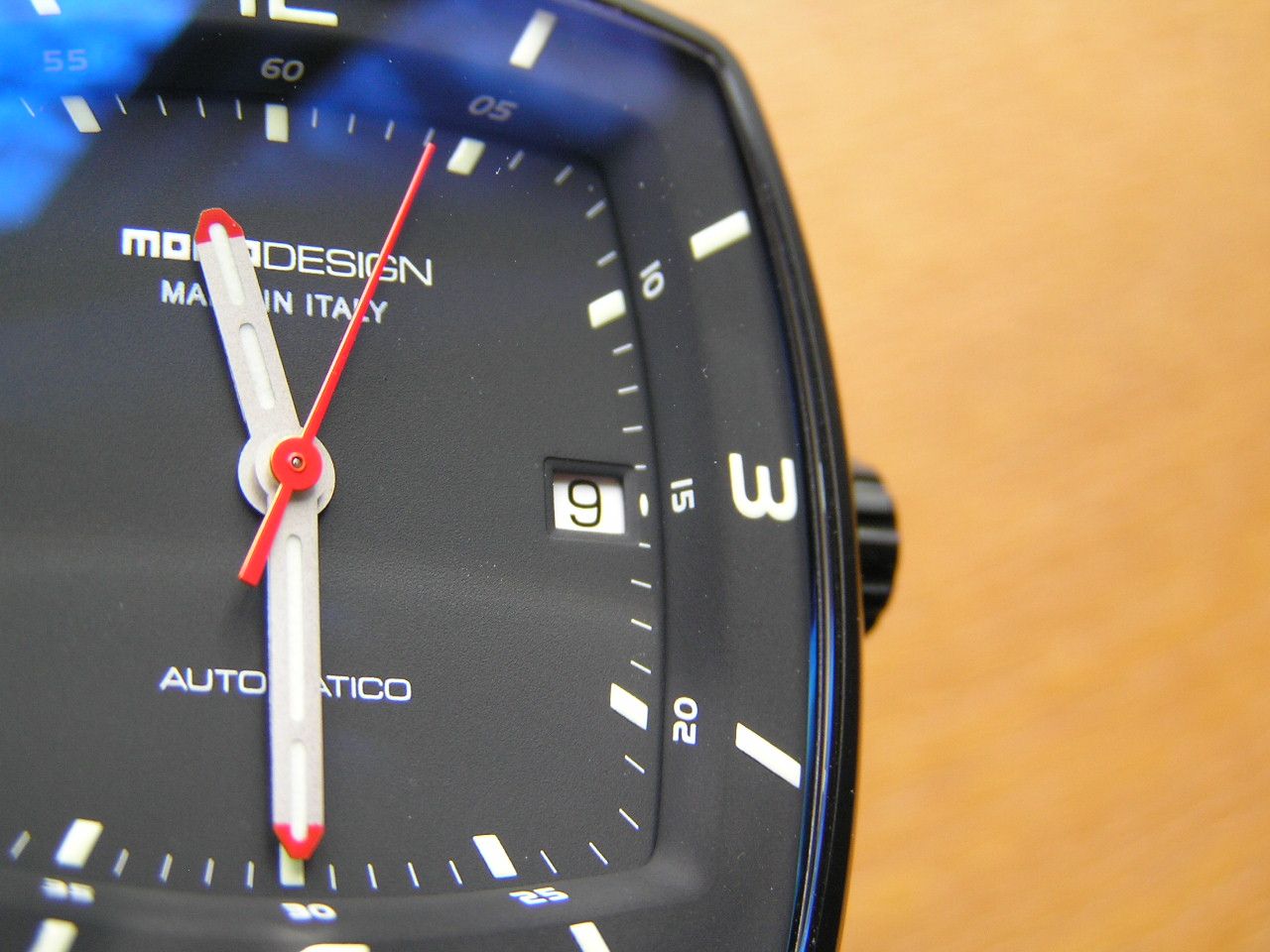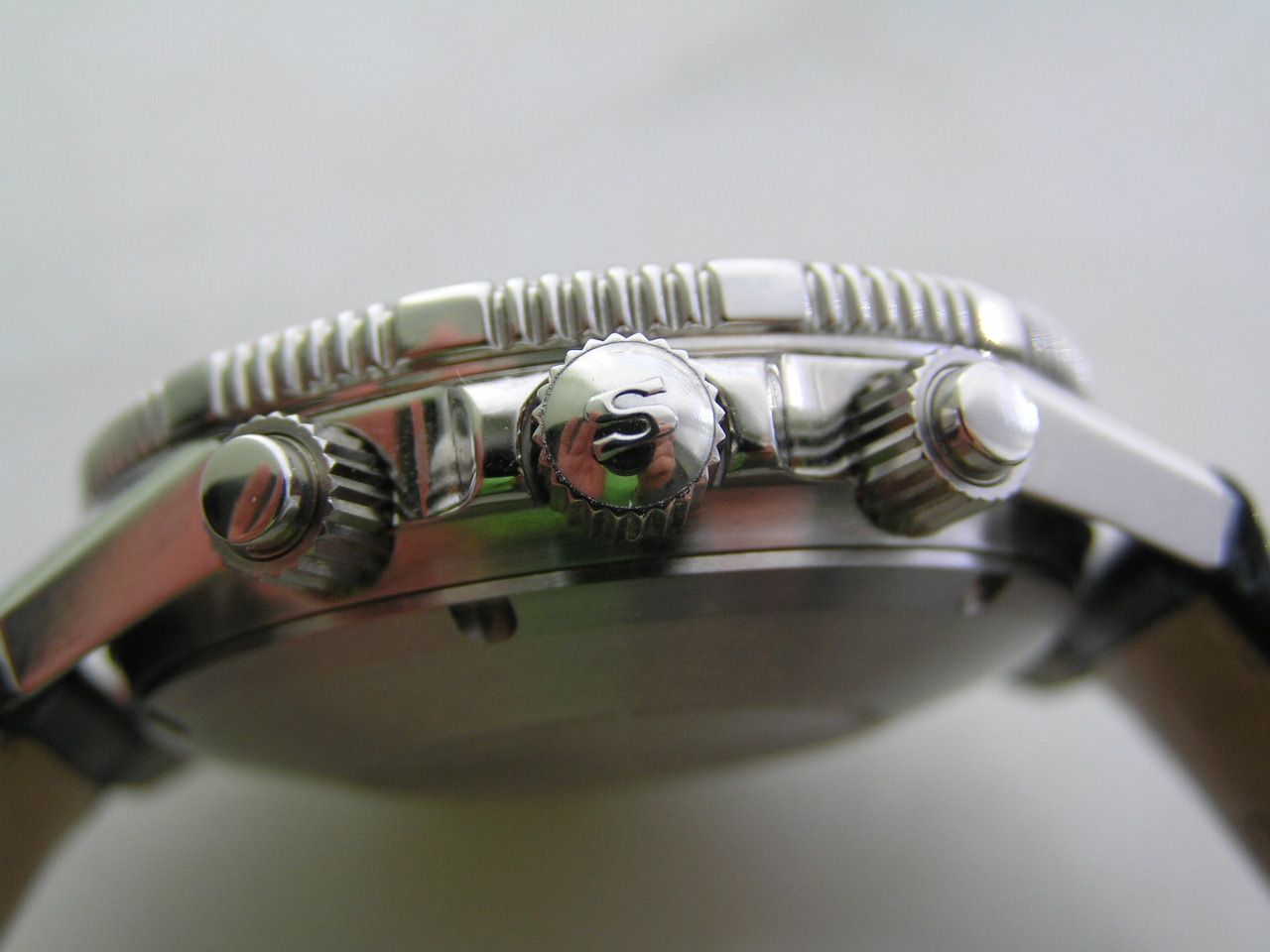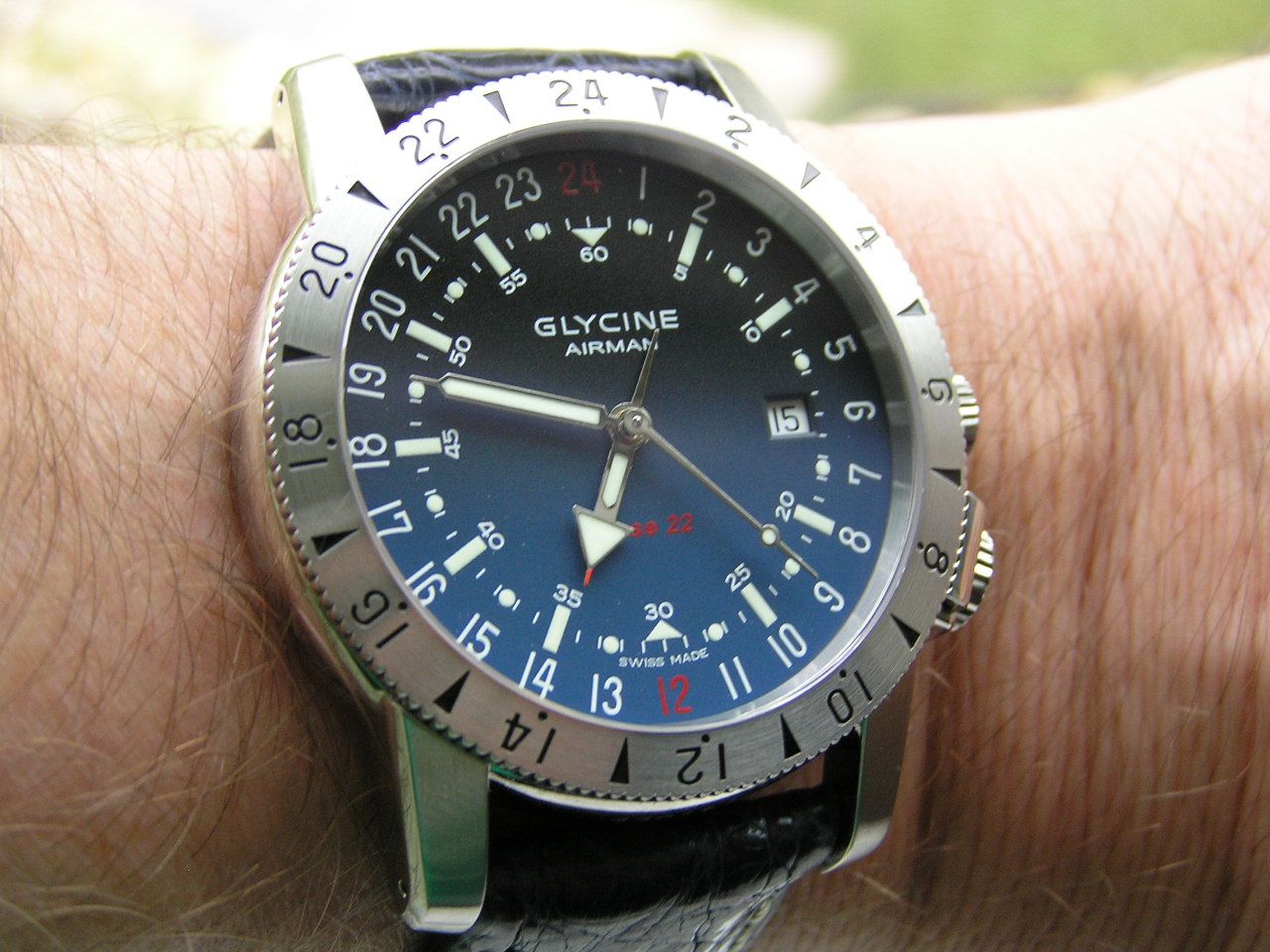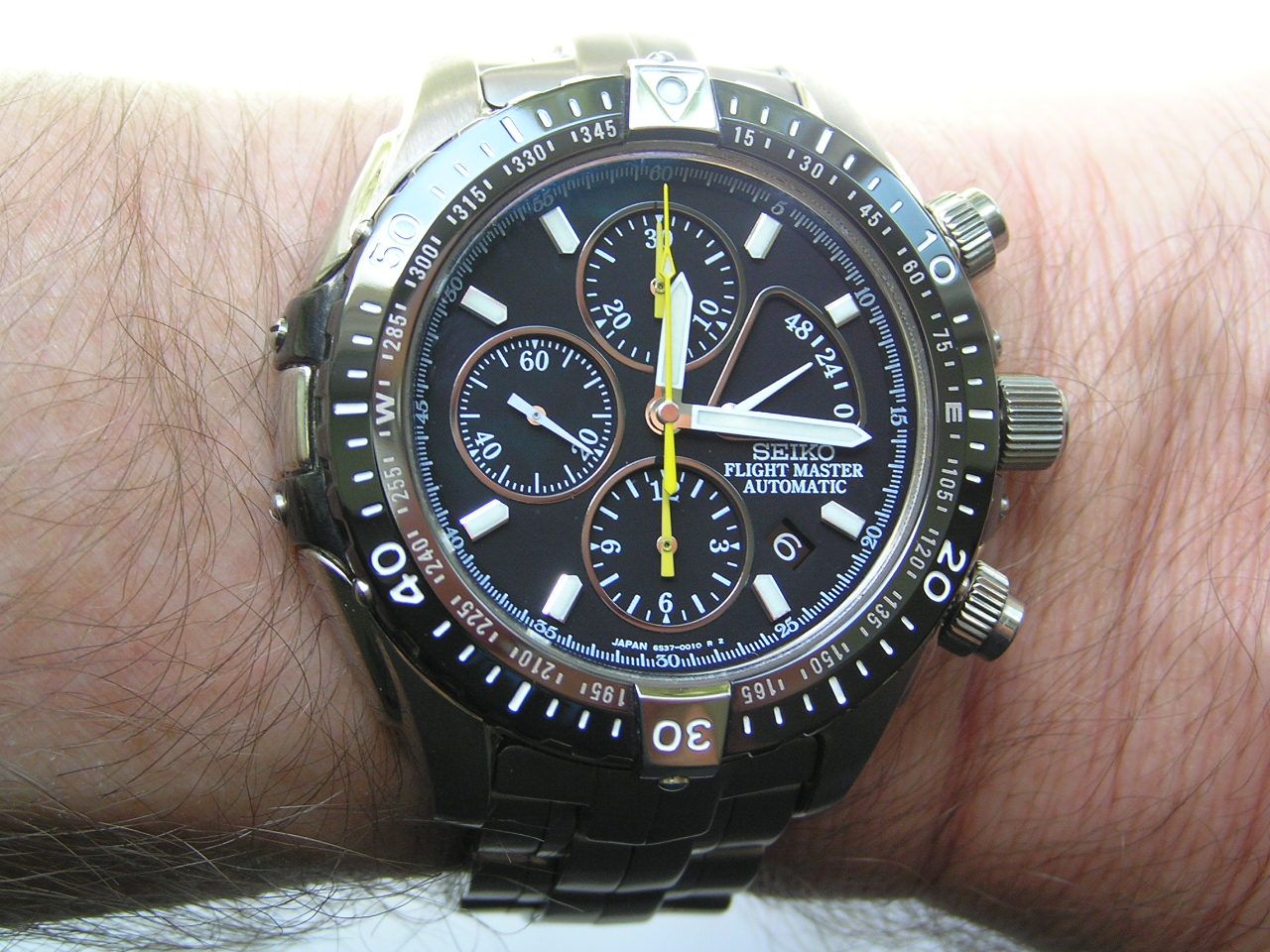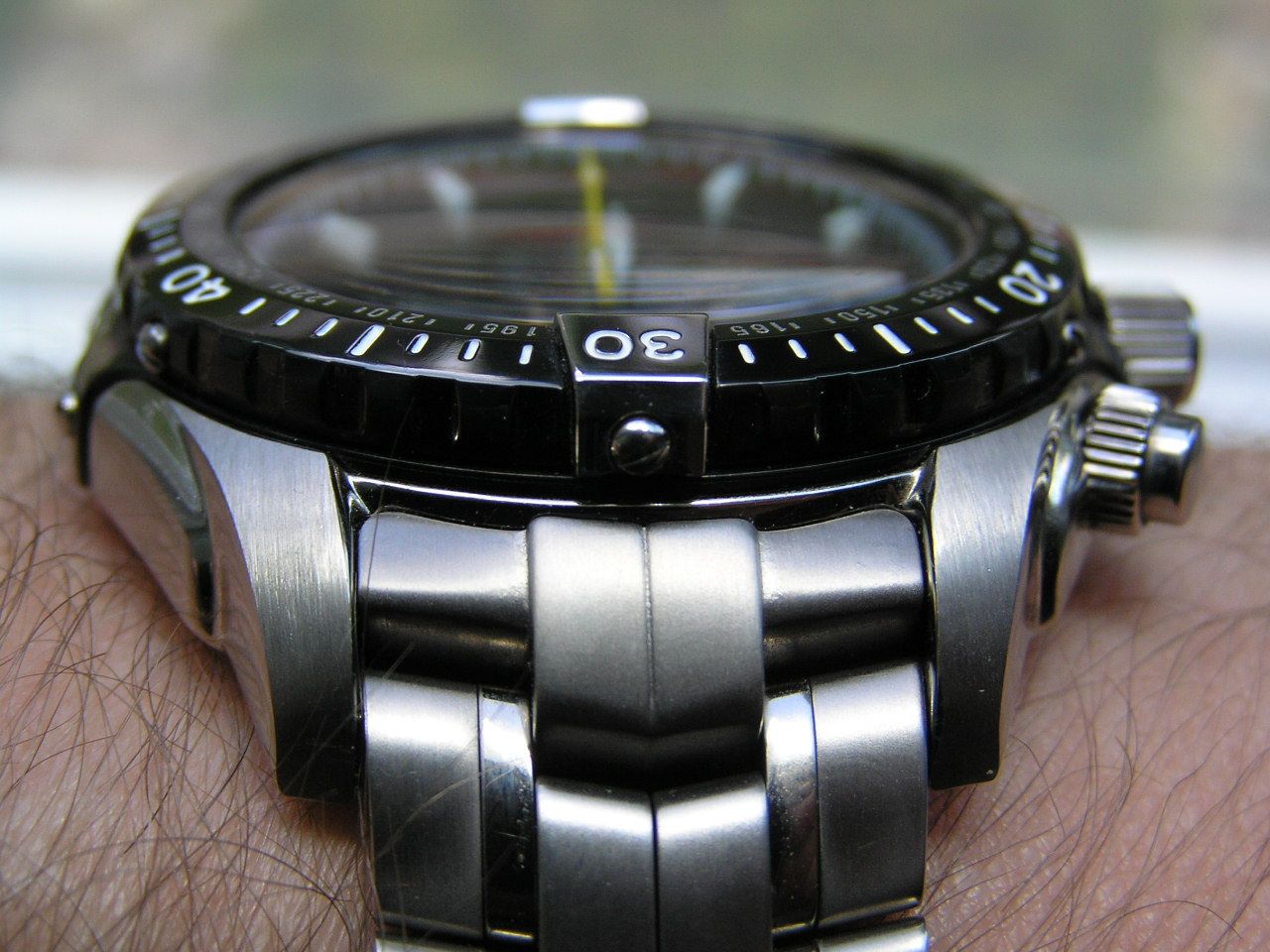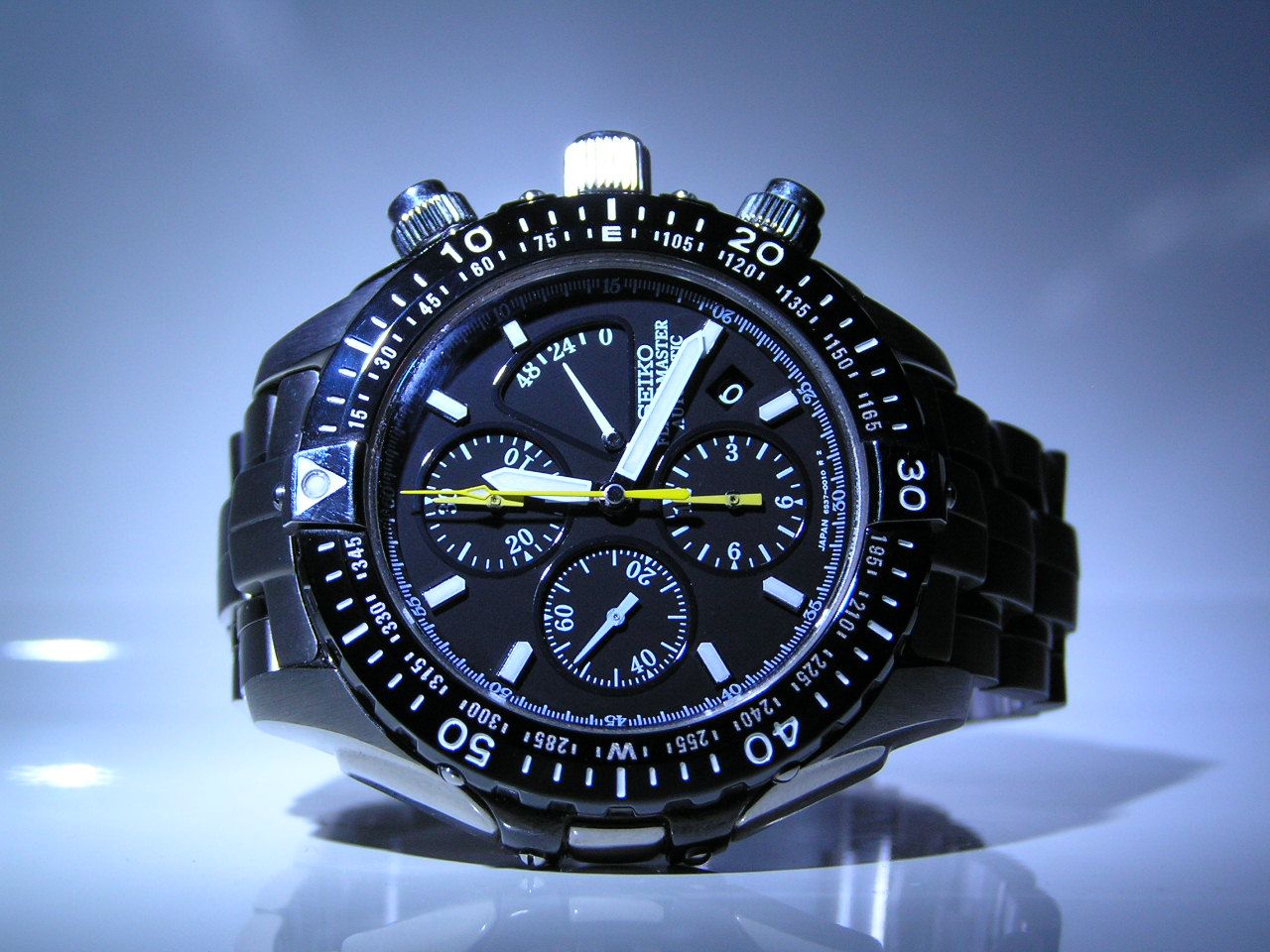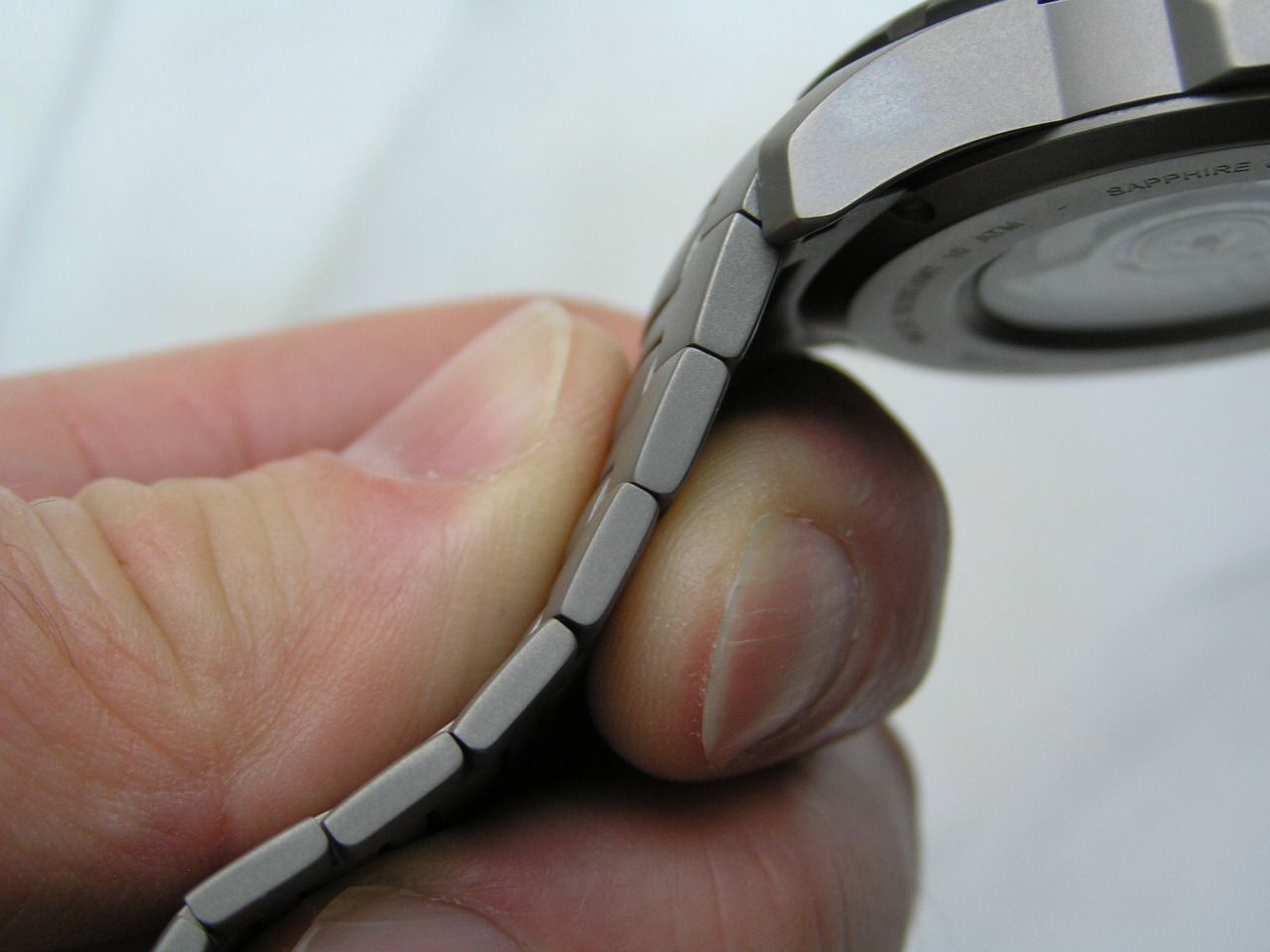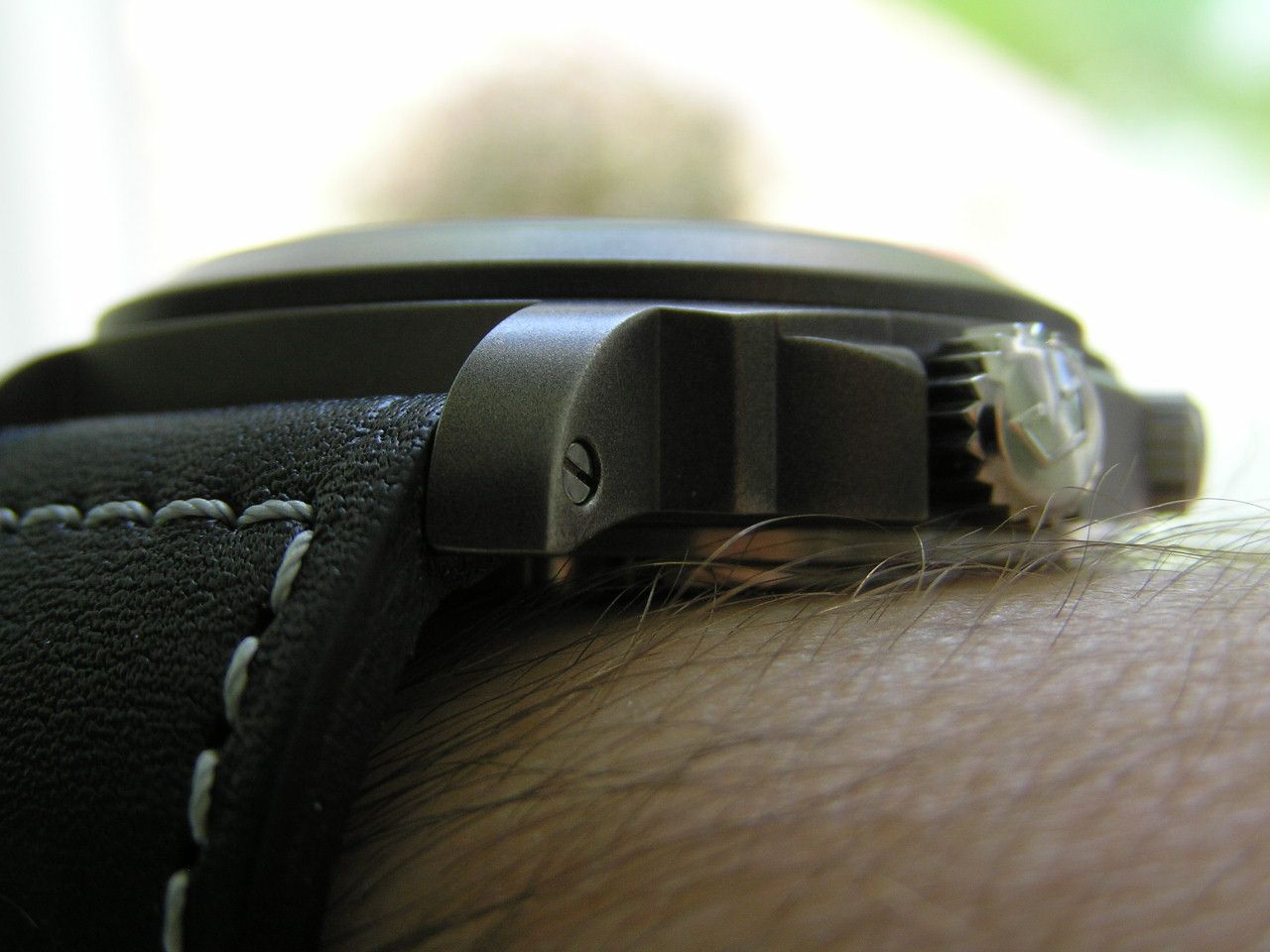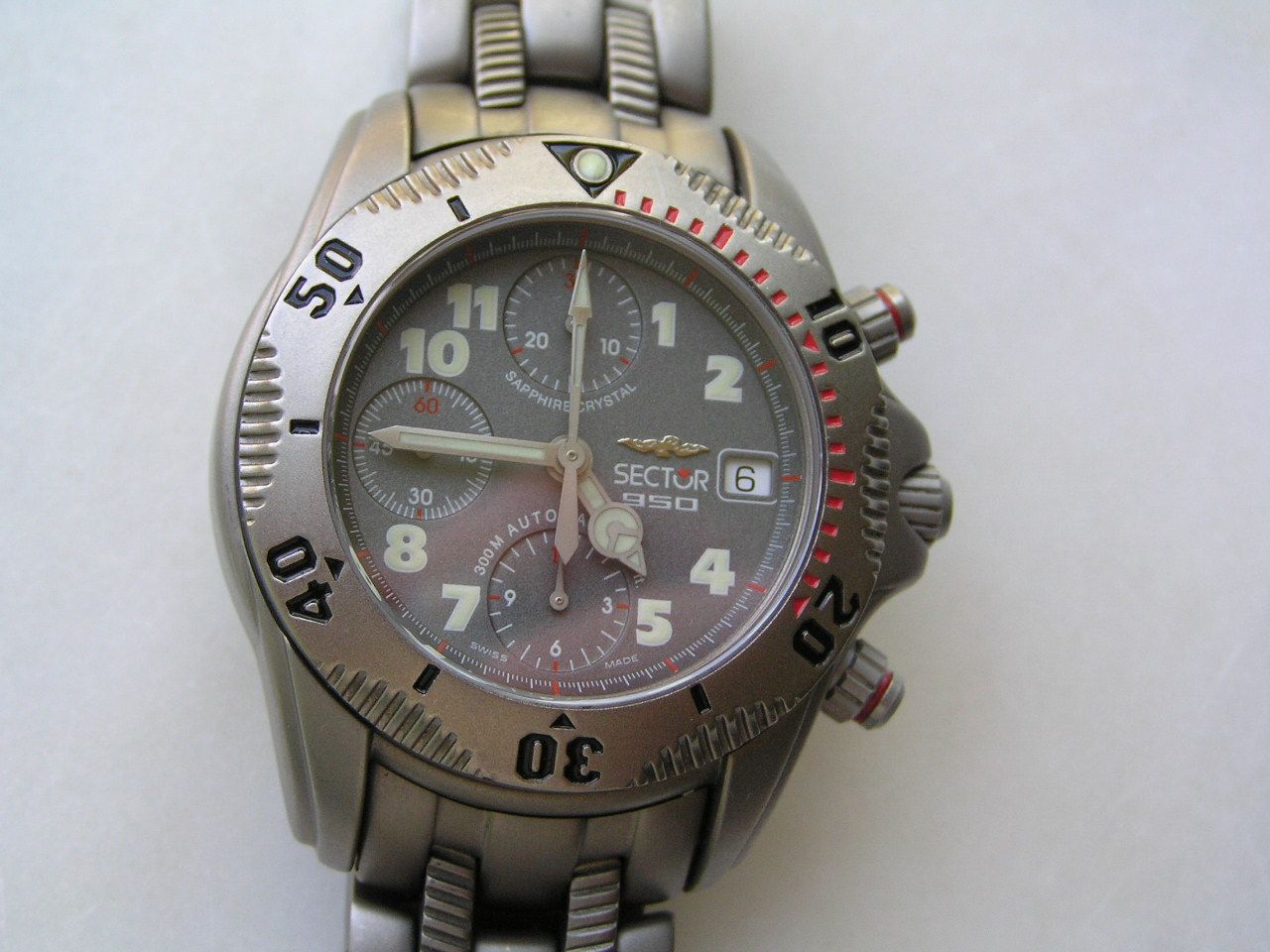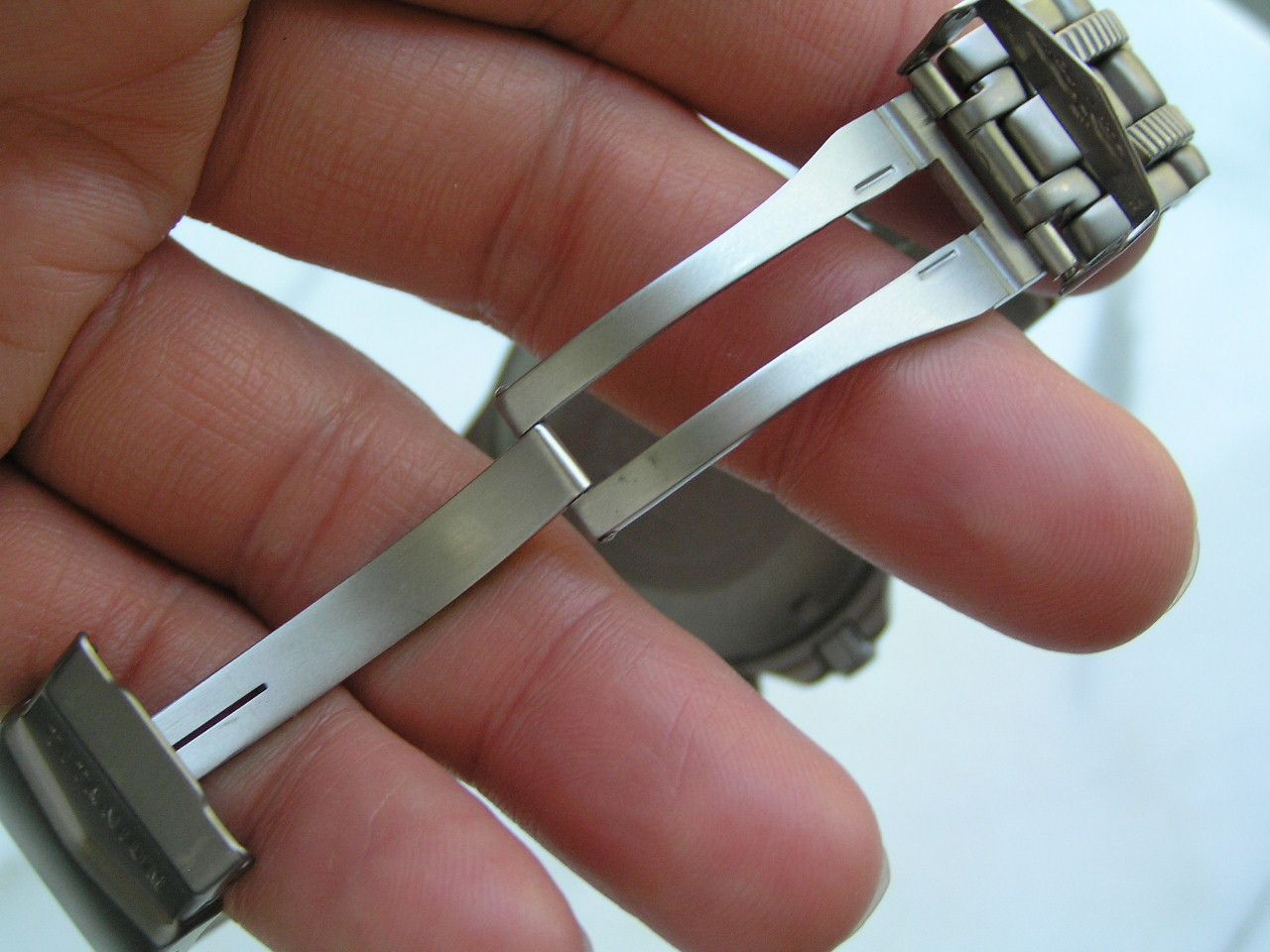Model # DJ00001B
Brand/Model: Orient Star GMT ‘Star Seeker’
Movement: Japanese automatic
Material: stainless steel case and bracelet
Complications: date display, independently adjustable third GMT hand, power reserve indicator
Price: MSRP: $1,100 USD; street price as low as $550 USD with discount coupon
Plenty of photos follow the review. Click on the pictures to enlarge.
Brand/Model: Orient Star GMT ‘Star Seeker’
Movement: Japanese automatic
Material: stainless steel case and bracelet
Complications: date display, independently adjustable third GMT hand, power reserve indicator
Price: MSRP: $1,100 USD; street price as low as $550 USD with discount coupon
Plenty of photos follow the review. Click on the pictures to enlarge.
When this Orient Star GMT first hit the Japanese market a year or two ago, it was fairly well received except for a couple design flaws that seemed to temper its sales success. The first generation of this watch featured a round cyclops over the date window and solid, thinner hands. Apparently, enough people voiced their concerns over these design elements and Orient then released the second generation of this model for worldwide consumption.
The newer model eliminated the cyclops and added slightly wider semi-skeleton hands to replace the originals. Most people feel these two changes were a big improvement to the original. I feel the loss of the cyclops was a good move, although I prefer the solid hands of the first generation.
Regardless of how you feel about the changes to the ‘Star Seeker’ (Orient USA’s name for this model), one thing Orient did not change was the fine in-house newly developed Caliber 40P51 automatic movement, with 22 jewels running at 21,600 bph and, drum roll please... handwinding and hacking capability! Finally! An Orient Star automatic that you can handwind instead of shake to get going. And hacking is always a welcome improvement.
Considering all the features this watch brings to the table, if you can get it at the 30-to-50 percent discount being offered regularly from Orient USA, you will have a watch with a high-value quotient. An automatic that hacks, manual winds with an independently adjustable GMT hand, power reserve meter and a sapphire crystal for around $600 USD? Not bad! But I’m getting a bit ahead of myself.
The Star Seeker is available in white and black dials. There are also some pictures floating around that appear to show a model of this watch with a black PVD bezel, but it’s unclear whether it’s just the lighting in the photo or actually a black bezel. Regardless, the all stainless version looks just fine.
The Star Seeker starts with an all stainless steel case measuring 41.4mm without the two crowns or the rather bulky crown guard. If the crown guard is factored in, the case measures 44.1mm. The case is polished and brushed and has an elegant carved style to the sides of the lugs, ala Omega. The case back screws down and is a display type, showing the mildly decorated movement and a nifty-looking signed and stylized rotor. Case thickness is 14.2mm, lug width is 21mm.
On the right side of the case, between the two crowns is a sort of crown protector that is screwed into the side of the case with two screws and fills the gap between the two crowns. This tends to make the watch look rather ungainly on one side. The jury is still out on this design element.
The lower crown at the 4 position screws down and is used to rotate the inner 24-hour bezel. The upper crown at the 2 position is used to wind and set the watch, set the quickset date and adjust the GMT hand in click-set one-hour increments. The upper crown does not screw down. Neither crown is signed, which disappointed me. I love signed crowns and think this Orient Star could benefit from having two signed crowns. A small quibble, but a quibble nonetheless.
The Star Seeker is factory rated at 100 meters of water resistance. A quickset date window is located at the 3 position and is outlined with a silver beveled frame. The date window is black on white.
The dial is quite detailed and fairly busy, some may find it a bit disjointed in relation to the location of the power reserve meter. I think a power reserve meter is a very useful complication to have. The meter on the Star Seeker is located in the upper left side of the dial, between the 10 and 12 positions. The meter has a silver lumed pointer and reads up to 40 hours in 10-hour increments. The scale is applied to the dial and has a nice three-dimensionality about it, with the meter subdial being inset into the dial.
Silver rectangular markers are located at each five minute mark, with the even numbers of the 24-hour GMT scale located at the end of each marker in the inner track of the dial. The rest of the 24-hour scale (odd hours) is represented by hash marks. Small lume dots are located on the other side of the markers between the inner rotating 24-hour bezel.
On the right side of the case, between the two crowns is a sort of crown protector that is screwed into the side of the case with two screws and fills the gap between the two crowns. This tends to make the watch look rather ungainly on one side. The jury is still out on this design element.
The lower crown at the 4 position screws down and is used to rotate the inner 24-hour bezel. The upper crown at the 2 position is used to wind and set the watch, set the quickset date and adjust the GMT hand in click-set one-hour increments. The upper crown does not screw down. Neither crown is signed, which disappointed me. I love signed crowns and think this Orient Star could benefit from having two signed crowns. A small quibble, but a quibble nonetheless.
The Star Seeker is factory rated at 100 meters of water resistance. A quickset date window is located at the 3 position and is outlined with a silver beveled frame. The date window is black on white.
The dial is quite detailed and fairly busy, some may find it a bit disjointed in relation to the location of the power reserve meter. I think a power reserve meter is a very useful complication to have. The meter on the Star Seeker is located in the upper left side of the dial, between the 10 and 12 positions. The meter has a silver lumed pointer and reads up to 40 hours in 10-hour increments. The scale is applied to the dial and has a nice three-dimensionality about it, with the meter subdial being inset into the dial.
Silver rectangular markers are located at each five minute mark, with the even numbers of the 24-hour GMT scale located at the end of each marker in the inner track of the dial. The rest of the 24-hour scale (odd hours) is represented by hash marks. Small lume dots are located on the other side of the markers between the inner rotating 24-hour bezel.
The dial itself is a deep, glossy black with fairly minimal printing consisting of the Orient Star name and logo, along with the words ‘automatic’ and ‘gmt’, the latter being in red.
The hour and minute hands are semi-skeleton in design and were probably chosen to aid in seeing the power reserve meter as the hands make their way around the dial. The hands are silver with inset lume. The seconds hand is a plain, silver tapered stick. I wish the seconds hand had more style, but I’m sure Orient didn’t want it to compete with the GMT hand. The GMT hand is thicker, red and sports a lumed arrow-style tip. Lume quality is in keeping with all of Orient’s latest efforts, read: very good to excellent.
The dial is capped off by the inner rotating 24-hour bezel that serves as the chapter ring, which also gives this watch three-timezone tracking capability. This bezel can be rotated in either direction and is not detented, so it can be positioned anywhere around the dial and locked into position with the lower crown.
A flat sapphire crystal with anti-reflective coating tops the dial and protrudes slightly above the stainless steel bezel of the watch. The crystal does not have any anti-reflective tint to it, partly because the coating can’t be very thick because it doesn’t snuff out all the reflections. No distortion was noted with the crystal and fit and finish into the case was fine. Overall fit and finish on the Star Seeker is pretty much first rate.
The Caliber 40P51 movement winds fine and by watching the power reserve meter, you’ll know when the watch has been fully wound. Hack setting works fine. I can’t tell you how much of a joy it is to have an Orient that can be manually wound.
The hour and minute hands are semi-skeleton in design and were probably chosen to aid in seeing the power reserve meter as the hands make their way around the dial. The hands are silver with inset lume. The seconds hand is a plain, silver tapered stick. I wish the seconds hand had more style, but I’m sure Orient didn’t want it to compete with the GMT hand. The GMT hand is thicker, red and sports a lumed arrow-style tip. Lume quality is in keeping with all of Orient’s latest efforts, read: very good to excellent.
The dial is capped off by the inner rotating 24-hour bezel that serves as the chapter ring, which also gives this watch three-timezone tracking capability. This bezel can be rotated in either direction and is not detented, so it can be positioned anywhere around the dial and locked into position with the lower crown.
A flat sapphire crystal with anti-reflective coating tops the dial and protrudes slightly above the stainless steel bezel of the watch. The crystal does not have any anti-reflective tint to it, partly because the coating can’t be very thick because it doesn’t snuff out all the reflections. No distortion was noted with the crystal and fit and finish into the case was fine. Overall fit and finish on the Star Seeker is pretty much first rate.
The Caliber 40P51 movement winds fine and by watching the power reserve meter, you’ll know when the watch has been fully wound. Hack setting works fine. I can’t tell you how much of a joy it is to have an Orient that can be manually wound.
The bracelet on the Star Seeker is a solid link design with tastefully styled polished and brushed links. The end links are solid. The clasp is signed and has a pushbutton release. The deployant is a proper machined type. The bracelet measures 21mm at the lugs and tapers to 17.9mm at the clasp. There are three micro-adjustment holes on the clasp to help achieve a good fit. Bracelet adjustment was easy, with standard split pins securing the links. The overall presentation of the bracelet and clasp are nice, but for some reason, it still feels a bit cheap to me. Maybe I’m just getting too picky.
In summary, the Orient Star ‘Star Seeker’ GMT is a superb piece of Japanese horological accomplishment. If you’re looking for a competent, stylish, reliable GMT watch with a host of quality features at what could be considered a bargain for the feature set, the Star Seeker shouldn’t disappoint.
Pros: in-house automatic movement that hacks and manually winds, power reserve function, independently adjustable GMT hand, sapphire crystal, nice fit and finish
Cons: some design elements still a bit ‘off’, modest water resistance rating, quality features on bracelet, but it still feels a bit cheap
Verdict: strong feature set for the price in a unique and reliable GMT timekeeper. Overall, the Star Seeker is a winner!
Thanks for reading and enjoy the pictures.
Excelsior!
-Marc







